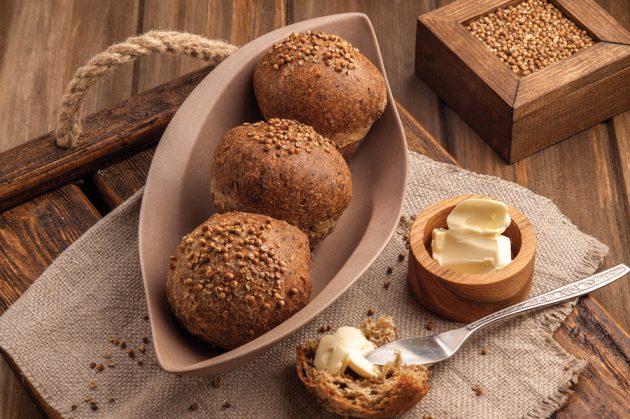
Formulating low-carb breads
By MPG
Processing Bake & Snack Food Bakery processing Editor pick Low-carb breads MPGCreate high-protein products by combining wheat protein isolates and resistant starches
 Bakers often encounter formulating and functional challenges when using high-protein ingredient solutions.
Photo © Valkyrielynn / Adobe Stock
Bakers often encounter formulating and functional challenges when using high-protein ingredient solutions.
Photo © Valkyrielynn / Adobe Stock The high-protein, lower-net-carbohydrate diet trend shows no sign of slowing. Yet, just two per cent of bakery products carried high or added protein claims in the five years ending in August 2019, according to Mintel. One of the reasons could be that food developers working with high-protein formulations often encounter functional challenges.
Over the years, the baking industry has attempted to develop low- or reduced-carb breads, for example, by incorporating a protein source and/or a dietary fibre source (resistant starch) to partially or fully replace flour in the formulation. The result was breads with challenging handling characteristics and differences in dough rheology, loaf volume, crumb grain, texture or flavour when compared with traditional bakery products.
However, research shows that the right combination of wheat protein isolate and resistant wheat starch can help to overcome these issues, while also resulting in lower net-carbohydrates.
Formulation issues
A research project at the American Institute of Baking International evaluated high-protein, high-fibre (low carbohydrate) bread formulas for white and wheat breads and compared them with standardized control breads.
The high-protein, high-fibre formulas contained a wheat protein isolate and a resistant wheat starch, a dietary fibre, along with vital wheat gluten, flour and soy fibre.
In terms of functionality, the high-protein, high-fibre doughs had higher water absorptions and required less high-speed mixing time than the control doughs. Dough consistency out of the mixer was generally good, trending to slightly sticky and elastic. The doughs improved over the course of the 30-minute floor time, to the point that most were judged good at the makeup stage. Proof times were quick. Bake times were increased about four minutes compared with the control doughs. The high-protein, high-fibre breads exhibited greater volume than the control breads.
Total quality bread score results showed no remarkable difference between test breads and control breads. However, there was a significant difference between high-protein, high-fibre breads and the control breads when net carbohydrate contributions were calculated. With the former, this ranged from 4.7 to 5.2 g per 28-g serving size. This was a significant net carbohydrate reduction as the control breads contributed 11.2-13.8 g per 28-g serving.
Nutritional benefits in a hard pretzel
In a baking applications test conducted in the MGP Ingredient Solutions test kitchen, proprietary wheat protein isolate and resistant wheat starch were used to create a formulation for a hard pretzel. The finished product had 10 g of protein per 30 g serving size.
Similar nutritional benefits of lower carbohydrates were accomplished with the use of a proprietary resistant wheat starch and FDA-recognized dietary fibre. The pretzel contained 12 g of total carbohydrates and six grams of dietary fibre, resulting in six grams of net carbs.
Bringing high-protein, low-carbohydrate bakery products to market may represent a significant opportunity, but it comes with formulation challenges. Bakers and food formulators desiring a high-protein, low-carbohydrate product with exceptional functional properties can use ingredient solutions with wheat protein isolate and resistant wheat starch to help them capitalize on this enduring diet trend.
This article was originally published in the September 2021 issue of Food in Canada.
Print this page